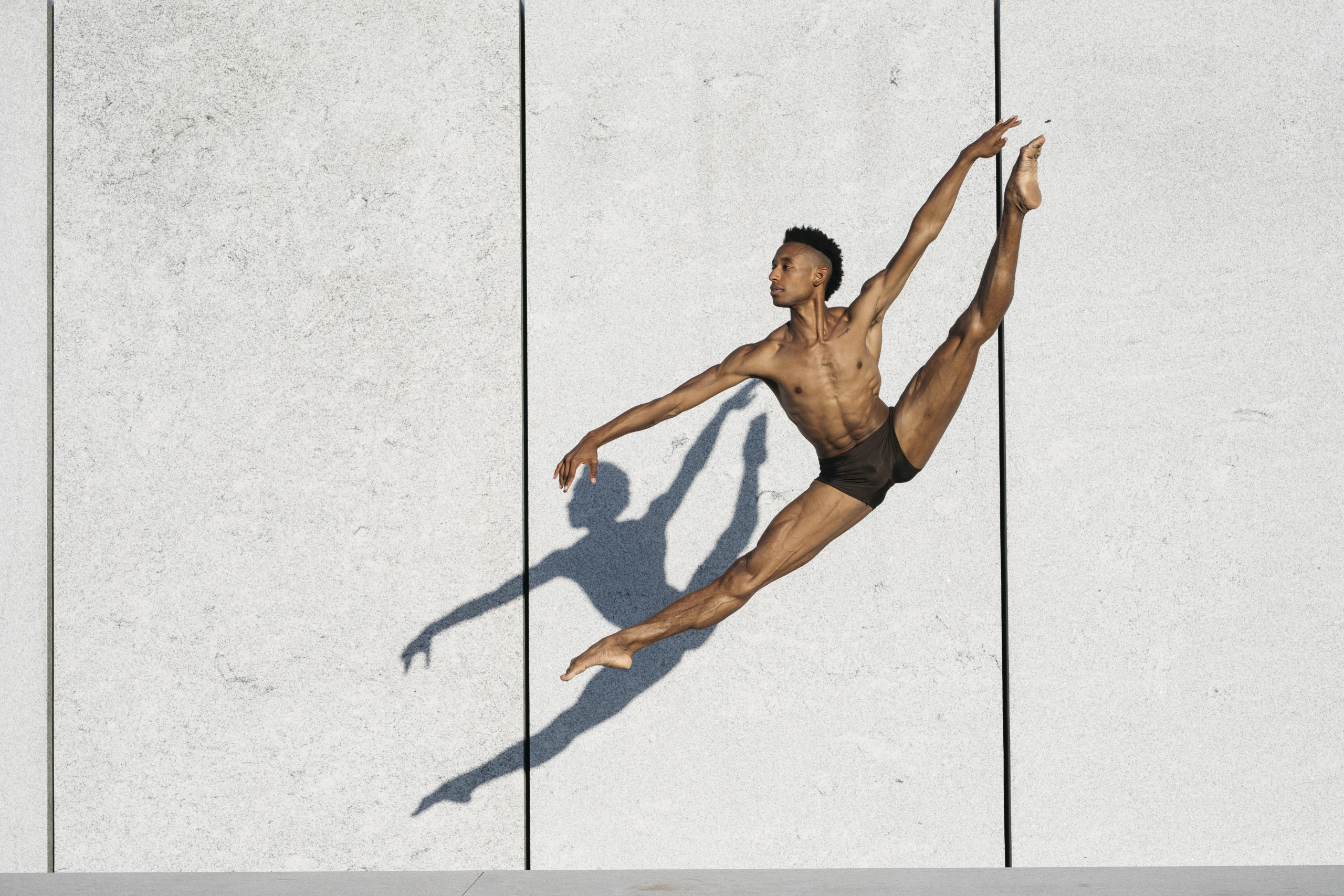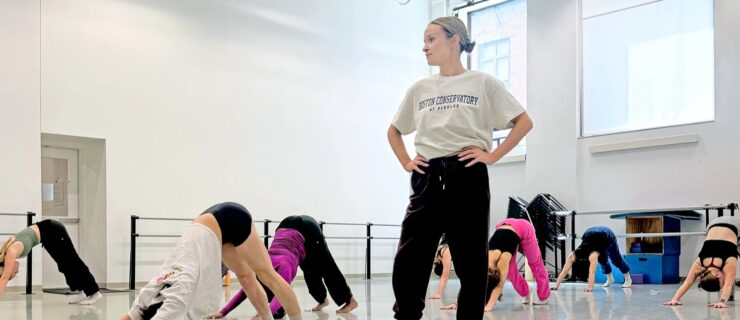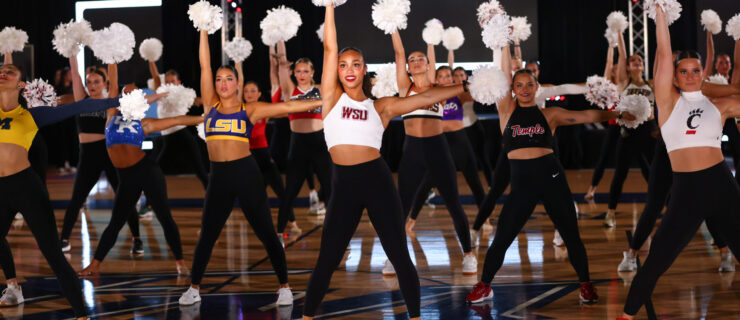Flexibility 101: Way More Than Just Stretching
Some of our favorite dancers have the flexibility of a thousand rubber bands, and we won’t deny that some of their gorgeous extensions have us so deep in awe that they’ve easily become #DancerGoals.
But despite knowing the importance of stretching—and the ongoing joke in the dance world about wanting to become flexible without stretching—we all know that achieving flexibility takes way more than just plopping down into a split and hoping for the best. Behind those lovely leg holds and #TiltTuesday posts that become goals for onlooking dancers are months (and sometimes years!) of hard work and commitment.
Being super-flexible won’t necessarily make or break your career as a dancer, but it sure wouldn’t hurt (okay, physically, it might be a little uncomfortable). So, we talked to four flexy dancers to learn their top tips for achieving and maintaining flexibility.
ADDISON ECTOR
Dance Spirit: Are you one of those lucky dancers that has been flexible for as long as they can remember? Or did you have to work for years to get to where you are now?
Addison Ector: Luckily for me, I’ve been flexible all my life. I remember not only being flexible in my legs, but also with my arms. I could kick my face and drop into splits with no control at all. Before I got into dance, I tried out for gymnastics because of my interest in the Athens 2004 Olympics. My parents took me to try out for the Los Angeles School of Gymnastics, and I was in complete shock of the Russian instructor pulling my legs in different ways to test my flexibility. That was a bit traumatic for me, but that then made me realize that dance was more my thing.
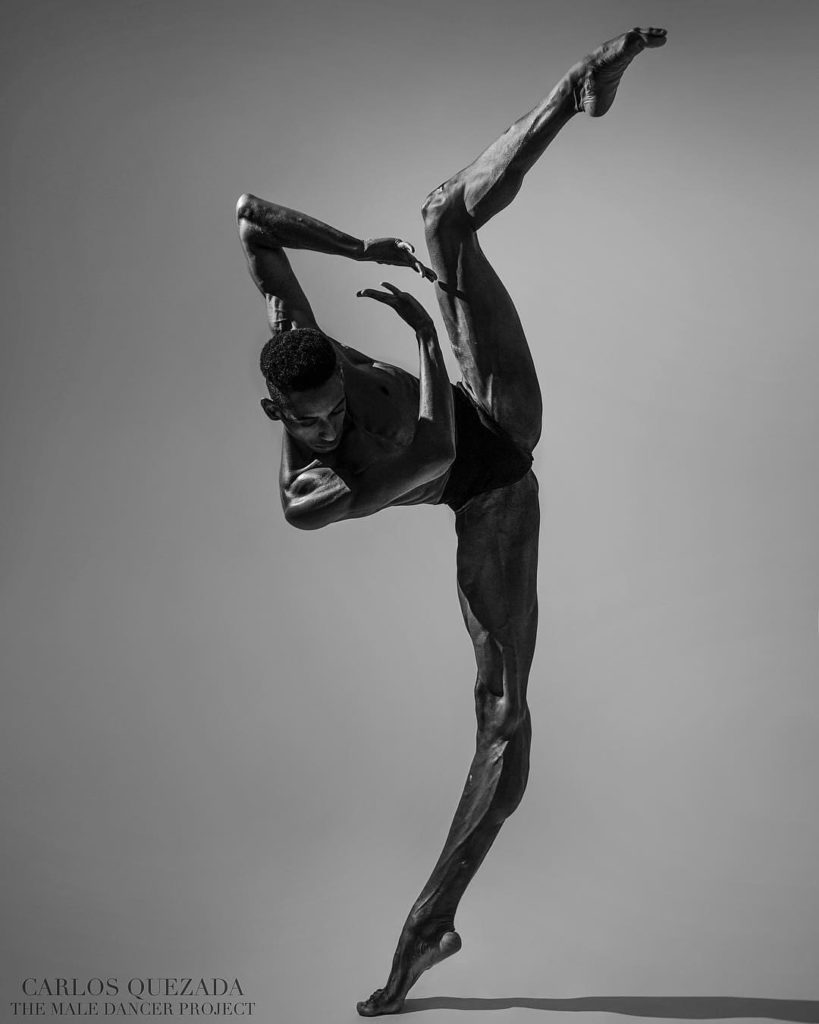
DS: How did you improve your flexibility over time?
AE: I didn’t have to build up flexibility as much as I had to build up strength and control. Ballet was really the key to gaining strength for me. I learned that if your leg is not shaking when you hold your leg as high as you can, you are limiting your possibilities.
DS: What’s your favorite stretch that you feel helps gain or retain your flexibility?
AE: Growing up, I used to wear ankle weights and do barre exercises (tendu, adagio, fondu) with them, and leg swings, too. The feeling of taking those weights off and then doing leg swings is amazing! Today, I love doing splits along the wall or mirror (with ankle weights, if available). Also, with one leg on the barre in second, going into a deep grand plié on my standing leg.
DS: What would you say is the easiest way to start building up a stretch routine?
AE: Add stretching into your gym workout or ballet class. Do the different stretches that you want to work on in between combinations. If you are lying down on your back, put your legs in a diamond position or open into a split against a wall. Next thing you know, you are doing those same stretches every single time you take class. Instead of forcing a stretch routine into your schedule, slowly add it to your already-made daily schedule (gym, dance class, watching TV, playing video games, etc.).
DS: You can’t flex your flexibility without strength. What are some of your top exercises for strengthening?
AE: Vaganova-based ballet classes have a lot of positions that are held. Growing up, I remember doing pliés and taking eight counts to go down and up, doing adagio and having to hold my leg out for more than four counts, legs shaking and sweating like crazy! Just like going to the gym and holding heavy weights, imagine your leg is the weight and you have to hold it in the air until your muscles are exhausted. Then, repeat the process until it becomes easier and your leg raises higher. Over time, you will gain the strength to hold your leg at different levels with ease.
DS: What’s something dancers should always avoid when working to gain flexibility?
AE: One, avoid the thought of giving up. You have to go through the pains and struggles in order to achieve the end goal.
Two, avoid pushing yourself too far. Just remember: The same way gaining muscles takes time and losing weight takes time, stretching to get your leg to your face also takes time.
DS: What would you say to encourage dancers to be great, beyond just being flexible?
AE: Remember, you can make any line beautiful. Whether it’s 25 degrees, 45 degrees, 90 or 180, they all have meaning and purpose when executed correctly. I’m a strong believer that there are three types of dancers: turners, jumpers and flexible dancers. I find most professionals only carry two out of those three, but being versatile in those three, and in other genres of dance, is key to becoming a well-rounded artist.
KERRYNTON JONES
Dance Spirit: Are you one of the lucky dancers who’s been flexible forever?
Kerrynton Jones: I believe that I am one of the lucky dancers who has been flexible for as long as I can remember. Over the years, I’ve been able to maintain and increase my flexibility by staying consistent with the routines I’ve developed for myself. I try my best to listen to my body and make sure I’m giving it what I need.
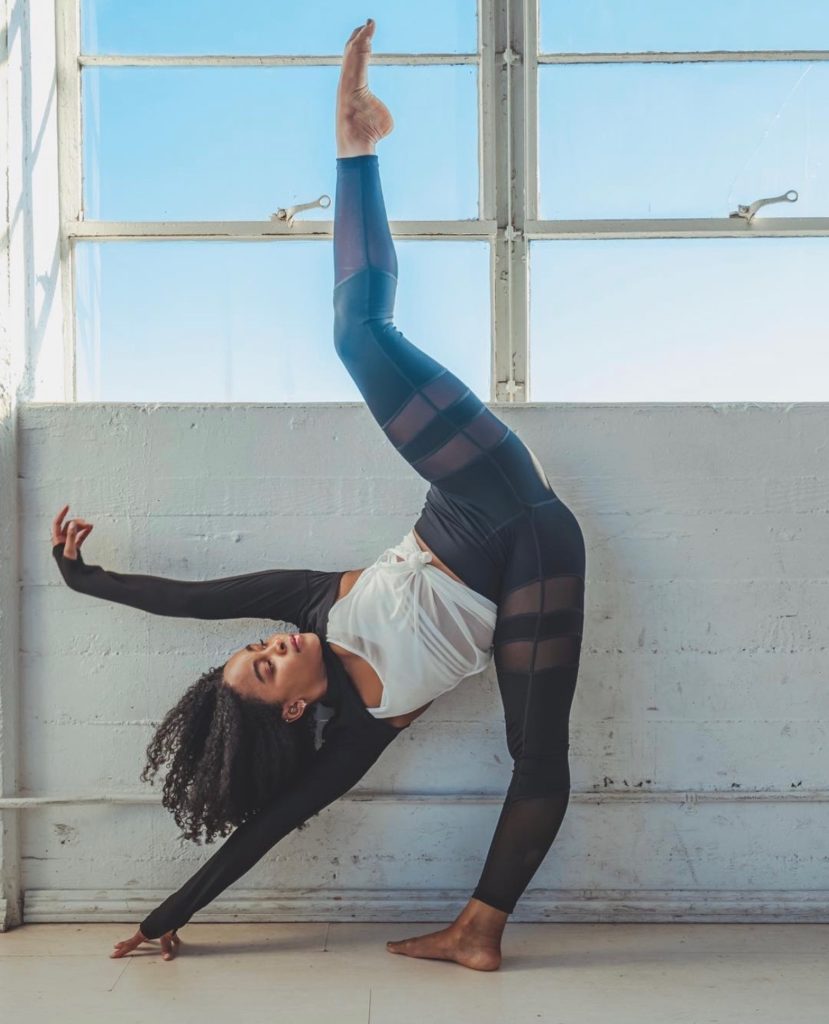
DS: What was your routine like building on your flexibility?
KJ: During my competition years, I dedicated a lot of time at night to stretching. As I got older, I began turning to hot yoga because I really liked what the heat did for my muscles and my body. I think it was a perfect environment to stretch and strengthen to prevent injury. One thing that has always remained consistent in my routine is foam rolling before and after rehearsals. Foam rolling helps increase flexibility and mobility without overstretching or straining the muscles.
DS: Would you say that warming up and cooling down before and after dancing is a crucial aspect in gaining flexibility?
KJ: Absolutely! Not warming up before a rehearsal, show or performance is a recipe for injury. Dancers’ bodies will perform and do the moves regardless, but over time the stress on the body due to lack of warm-ups can lead to injuries. Warming up can also increase your chance of gaining flexibility because then you’re not trying to stretch a stiff muscle. Cooling down is also super helpful for recovery especially after a long day of dancing.
DS: Are you a static stretcher or a dynamic stretcher?
KJ: I’m definitely a dynamic stretcher before a rehearsal or a performance. Dynamic stretching gets the blood pumping and makes my body feel more prepared for movement. On the other hand, static stretching makes me feel more flexible, so I enjoy doing that at night before bed sometimes.
DS: How would you get dancers to understand the discipline that it takes to achieve their desired flexibility?
KJ: The biggest thing to understand is that stretching does not have to be this super-painful, boring task. If you add in something that you enjoy doing while stretching, it can be fun to have that discipline and routine for yourself. I usually do my nightly routine with foam rolling and stretching while watching Netflix or listening to music. By the time the episode is over, I’ve breezed through my routine and my body is more prepared for another day of dancing.
DS: What are some of your top exercises for strengthening so that you can actually execute and hold certain extensions confidently?
KJ: Clamshells lying on the floor with a resistance band is definitely my number one. It seems like the most basic exercise, but it really helps strengthen the inner thighs and the muscles needed to hold those extensions.
DS: What’s something dancers should always avoid when working to gain flexibility?
KJ: I see a lot of dancers doing over-splits or having their friends stretch their legs behind their head for them. Dancers should avoid any type of overstretching, especially when their bodies are not warmed up.
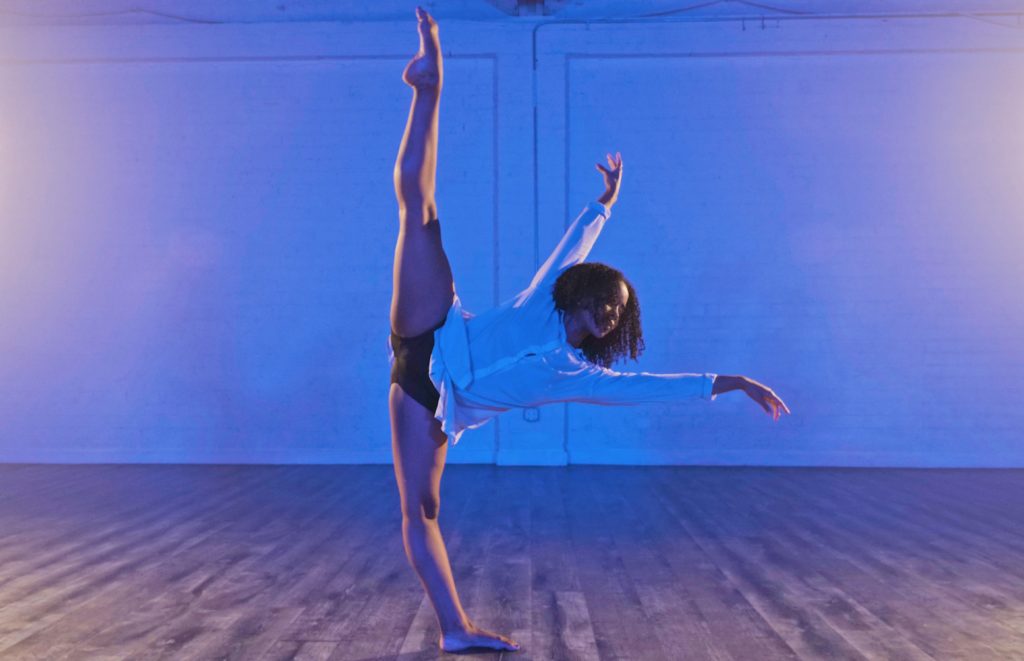
DS: What would you say to encourage dancers to be great, beyond just being flexible?
KJ: I would definitely work on your performance. At the end of the day, dance is about making people feel something. Nowadays, everyone has a leg that they can kick to their face, but regardless of how “cool” it may look, it doesn’t mean anything if there’s no feeling behind it.
DEREK PIQUETTE
Dance Spirit: Were you also flexible for as long as you can remember?
Derek Piquette: I was naturally flexible to an extent, especially for a male, and someone that wasn’t always a dancer. But it did come pretty quickly and easily to me when I started dancing.
DS: What was your stretch routine like when you started training more seriously?
DP: There was a lot of overstretching, which I’ve now learned so much about, and how unhealthy and unsafe that can be. I always say to my students that no one on earth needs to be as flexible as I was. Especially if you want a long career in dance. Being as flexible as I was back then will never be a strict requirement for a dance career, and that’s something I didn’t learn until I was about 18.
DS: Is warming up and cooling down before and after dancing a crucial aspect in achieving flexibility?
DP: Absolutely! I had two hip surgeries since much of the stretching and training I went through was overdone and incorrect for so many years. It wasn’t until after hip surgery that I really took into consideration that my body is my everything and I need to treat it better by warming up and cooling down properly. Cardio is the most important part of any dancer’s warm-up. If you want to gain more flexibility, you need to be the warmest you possibly could be. And the importance of cooldowns or stretching after training needs to be emphasized in more curriculums and dancers’ lives. It’s so important for recovery!
DS: How would you get dancers to understand the discipline and patience that it takes to achieve flexibility the right way?
DP: We do live in a generation that desires instant gratification. It’s not everybody, but I would say a majority of dancers want to see immediate results, especially with social media. But there is no easy way or quick trick to getting flexible. It just takes hard work, dedication, and doing it every day. What I tell my students is that if you want to be good at something, you have to be obsessed with it for a while. It’s gonna be a really slow incline, but you just have to maintain it.
DS: What’s the easiest way to build a routine so that building the habit of stretching feels like second-nature?
DP: Just carving out a little bit of time in your schedule. Life is so busy, especially for dancers in school and constantly training, but if you can carve out at least 30 minutes of your day just to do a quick stretch-out—about 15 minutes of cardio, and actively holding different stretches for a minute each—that will make a difference. You may not gain a ton of flexibility fast, but that’s an easy way to start getting it into your everyday routine.
DS: What are your favorite strengthening exercises for gaining control?
DP: I do a lot of glute bridges because the biggest thing that dancers need to be strong with are their glutes and their core. During my warm-ups, after cardio, I go straight into core workouts for about 10 minutes. That’s because your core is what warms up your body, just like the core of the earth warms up from the center and emits out.
DS: What’s something dancers should avoid when stretching?
DP: Pushing too far. If you feel a sharp, stabbing or pinching pain, you should stop. Don’t let someone push you down. Don’t be afraid to ask questions. Don’t be afraid to say “Hey, my hips are hurting. I need to stop.”
ALEXIS MOORE
Dance Spirit: What inspired you to start a business surrounding the topic of flexibility?
Alexis Moore: The impact that stretching has had on me personally is what inspired me to want to help other people learn this practice and integrate it into their lives. I retired from rhythmic gymnastics at the age of 16, eventually became a fitness instructor, and started teaching stretching classes at a studio.
When I would stretch, I felt this release of tension from my body and felt so much positive impact on my mental well-being. Being able to see the amazing ripple effects that trickled into other areas of my students’ lives when we intentionally worked with our bodies to improve flexibility made me want to keep sharing that.
DS: Have you been flexible for as long as you can remember?
AM: No! Being a rhythmic gymnast, me and my teammates would literally cry while we were doing some of our stretches. We’d be doing over-splits, sometimes between two chairs and holding our back legs at the same time. It was really intense.
Once I retired, I didn’t retain the degree of flexibility that I had, but I did continue to stretch and work on it because, generally, stretching just made me feel so much better.
DS: What’s your routine like when helping someone build up their flexibility?
AM: We need to start with stretches that are going to start to open up the muscles more gently, then we always finish with our deepest stretch, which is the splits. Because the splits open up so many muscles and joints simultaneously, in such a deep way, working with the splits has always been what I’ve viewed as the vehicle for continuously increasing flexibility. If someone is a real beginner, then we won’t start them off with that, but we will definitely build up to that over time.
DS: What’s your favorite stretch that helps you gain/retain flexibility?
AM: The splits! Like yoga, we’re working within our range of motion, and we’re getting more comfortable within that range. The splits challenge your body to move past what your current range of motion is, making it easier to expand your range of motion over time.
DS: What are your tips for achieving amazing lines?
AM: Core strength is the foundation to achieving an amazing line. It’s not just a matter of getting your legs super flexible. You have to have control in your core, and it requires a lot of strength. Exercises that you do in ballet—like holding your leg out straight in front of you—really build up small anterior muscle strength that allows your body to support itself in extreme positions.
DS: How can dancers understand the discipline it takes to achieve their desired level of flexibility?
AM: When I work with my clients, a couple of things that come up are that it feels really overwhelming or they feel “bad at it.” The sensations that you experience when you stretch can be very intense, and a lot of people aren’t used to sitting with discomfort. It’s much easier to escape it, but it’s really about changing that relationship with discomfort and getting more comfortable being uncomfortable. Once you learn how to sit and breathe through the discomfort without judging yourself, it can really shift your relationship with the practice of stretching.
DS: What are your top exercises for strengthening?
AM: Using resistance bands for squats and lunges, and planks really help strengthen the core. Glute bridges are another really good one because they target the hamstrings and get your glutes nice and warm, making it much easier to stretch out.
I really recommend push-ups, too, because when you’re doing your splits, you’re going to need to support yourself on your arms and hold yourself up with your core muscles so that your legs can be really relaxed enough to sink into your stretch.
DS: What are some things dancers should avoid when looking to gain flexibility?
AM: One, bouncing down into a static stretch. Bouncing just puts tension on your tendons. It doesn’t actually stretch your muscles, but instead puts you at risk of injury. Two, holding your breath during stretches. Learning to observe the rhythm of the breath while you’re stretching will help you sink into your stretches more effectively. Three, not maintaining a neutral spine when stretching. For practically all stretches, you should be hinging at your waist instead of curving the back.
DS: What would you say to encourage dancers to be great beyond just being flexible?
AM: The biggest impediment to any performer is looking at someone else and thinking things like “Look at what they’ve got, that’s the standard” or “I’m falling short of that.” That’s telling yourself that you’re not good enough. What’s more magnetic is someone embracing however they decide to show up—bringing their full energy, being confident in what they bring to the table, and doing this because this is what they enjoy and are passionate about.
